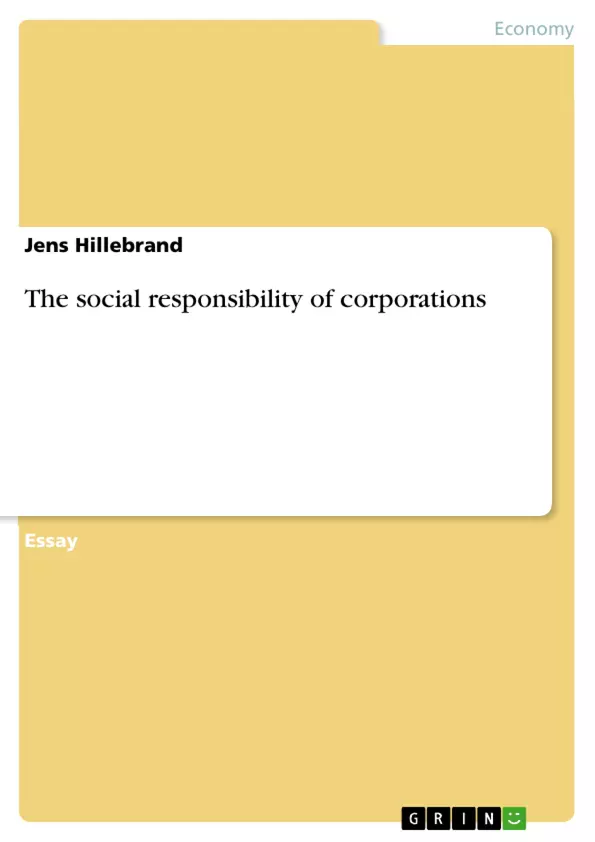This essay builds upon Milton Friedman's (1970) famous statement that "the social responsibility is to make a profit".
It analyses four dimensions of corporate social responsibility - economic, legal, ethical and philanthropic - and discusses arguments for and against each of them.
The study concludes that there is need as well as justification for CSR, not only in a strategic manner, but also in an altruistic/philanthropic way.
Inhaltsverzeichnis (Table of Contents)
- Introduction
- Discussion
- Rationale for a pure profit-maximising view on CSR
- Shortcomings of the profit-maximising view and reasons for ethical responsibilities
- Carroll’s “Pyramid of Corporate Social Responsibility” and philanthropic responsibilities
- Strategic CSR
- Altruistic CSR
- Conclusion
Zielsetzung und Themenschwerpunkte (Objectives and Key Themes)
This paper aims to critically evaluate Milton Friedman's statement that "The social responsibility of business is to increase its profits" and to discuss the appropriate and legitimate range of corporate social responsibility (CSR). It will explore the rationale for a profit-maximising approach, highlight its shortcomings, and argue that corporations must embrace ethical responsibilities. The paper will then introduce Carroll’s "Pyramid of Corporate Social Responsibility," which includes philanthropic responsibilities, and examine the debate surrounding strategic and altruistic CSR.
- The role of profit maximisation in corporate social responsibility
- The limitations of a purely profit-driven perspective
- The importance of ethical responsibilities for corporations
- Carroll's "Pyramid of Corporate Social Responsibility" and its four dimensions
- The debate between strategic and altruistic CSR
Zusammenfassung der Kapitel (Chapter Summaries)
Introduction
The introduction presents Milton Friedman’s famous statement about the social responsibility of business and outlines the paper's objective to critically evaluate this claim and explore the legitimate range of CSR. It previews the study’s approach by outlining the rationale for a profit-maximising view of CSR and then highlighting its shortcomings.
Discussion
The discussion section explores the arguments for and against a pure profit-maximising view of CSR. It examines the reasoning behind Friedman's view and highlights its flaws. The section also introduces Carroll’s "Pyramid of Corporate Social Responsibility," which outlines four dimensions of CSR: economic, legal, ethical, and philanthropic. The focus then shifts to the debate surrounding philanthropic CSR, specifically the distinction between strategic and altruistic CSR.
Schlüsselwörter (Keywords)
Key terms and concepts covered in this text include corporate social responsibility, profit maximisation, ethical responsibilities, philanthropic responsibilities, strategic CSR, altruistic CSR, Carroll’s “Pyramid of Corporate Social Responsibility,” shareholder value, and corporate governance.
- Citar trabajo
- Jens Hillebrand (Autor), 2006, The social responsibility of corporations, Múnich, GRIN Verlag, https://www.grin.com/document/80664



